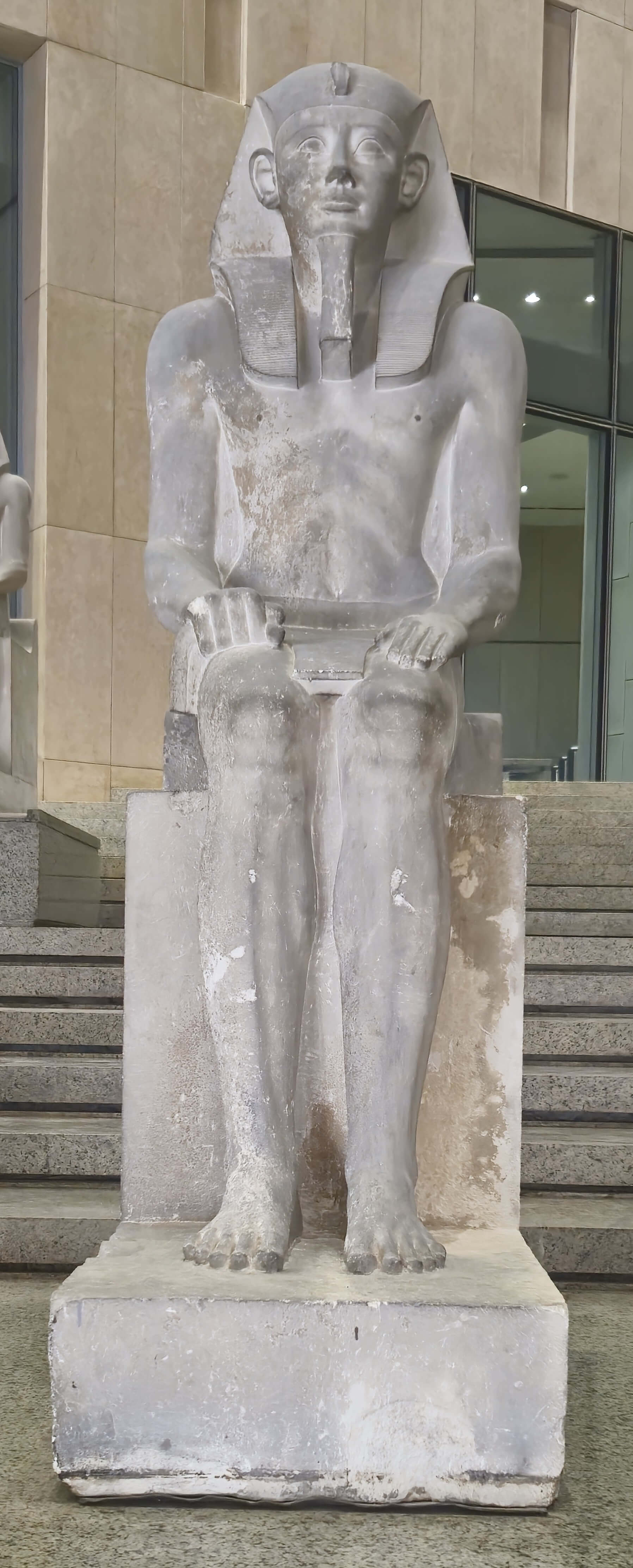
GEM 81971
King Senwosret I
In the golden age of Egypt’s Middle Kingdom, during the 12th Dynasty (c. 1965–1911 BCE), King Senwosret I reigned as a powerful and reformist pharaoh who left an enduring architectural and symbolic legacy. One of the most fascinating aspects of his statuary and throne imagery is the consistent use of unification motifs—powerful symbols expressing his sovereignty over both Upper and Lower Egypt.
The artifact in question, part of his pyramid complex at Lisht, shows the sides of a royal throne adorned with the “Sema-Tawy” symbol, which literally means “Union of the Two Lands.” This iconic emblem is made up of two entwined plants: the papyrus representing Lower Egypt (Delta region), and the lotus symbolizing Upper Egypt (the Nile Valley). These plants are often tied around a trachea and lungs, metaphorically uniting the breath and strength of the nation under one crown.
This symbol, repeated throughout royal iconography from the Old Kingdom onward, emphasized that the king was not simply a ruler of territory—but the divine personification of unity, stability, and cosmic order (Ma’at). On this throne, the unification is accompanied by hieroglyphic texts, likely prais ... Discover more with Premium!
Unlock the Full Story of This ArtifactUpgrade to premium to access the complete description, audio guides, and exclusive content for all artifacts.Access the full audio and description for the GEM's main artifacts for only $1.99
Looking For Another Artifact ?